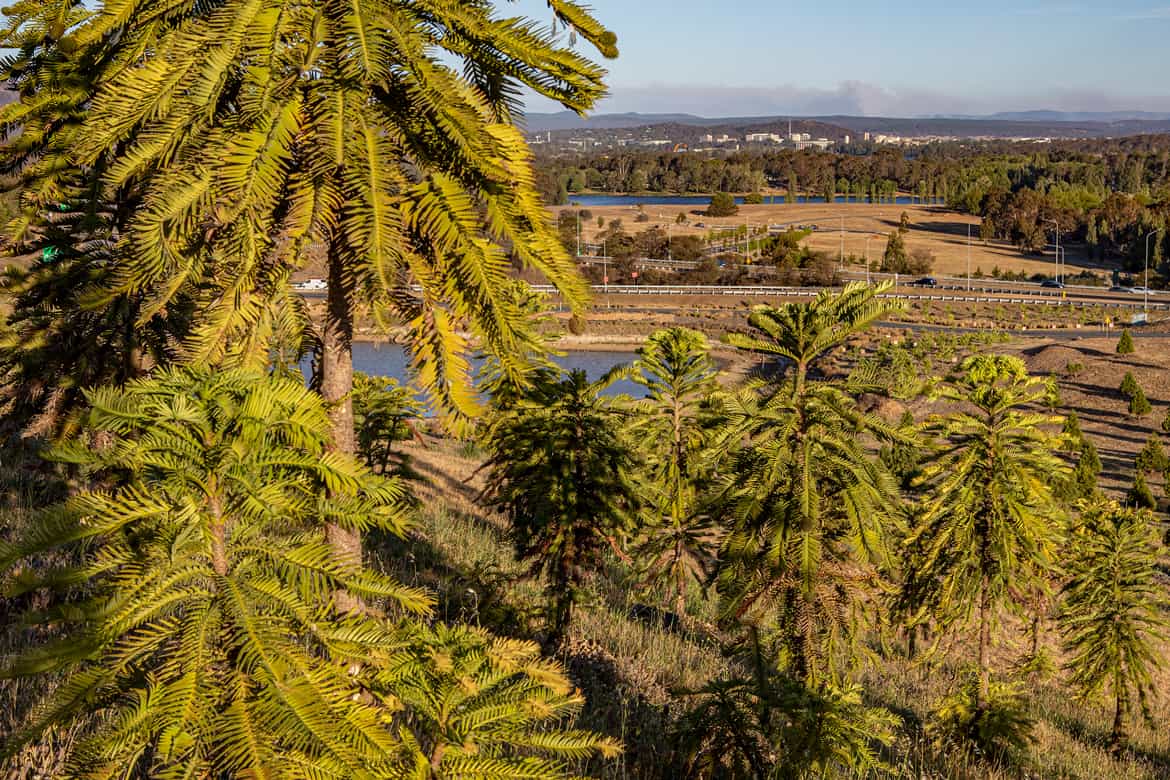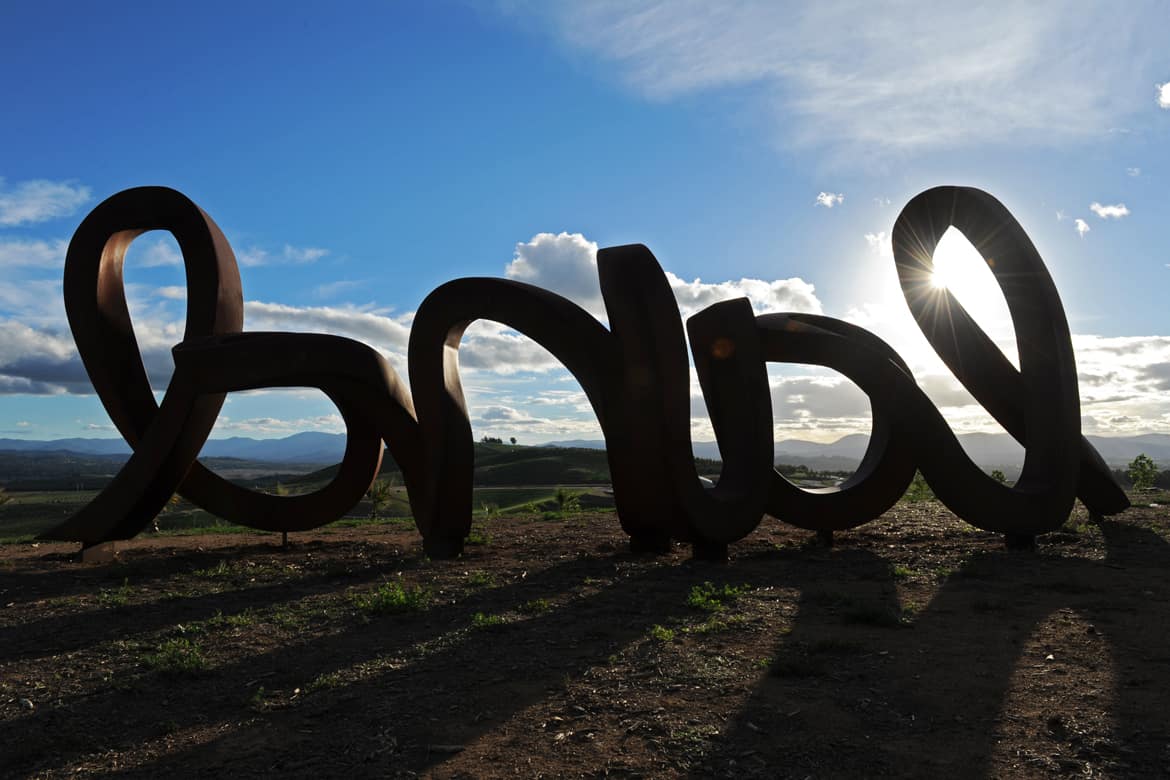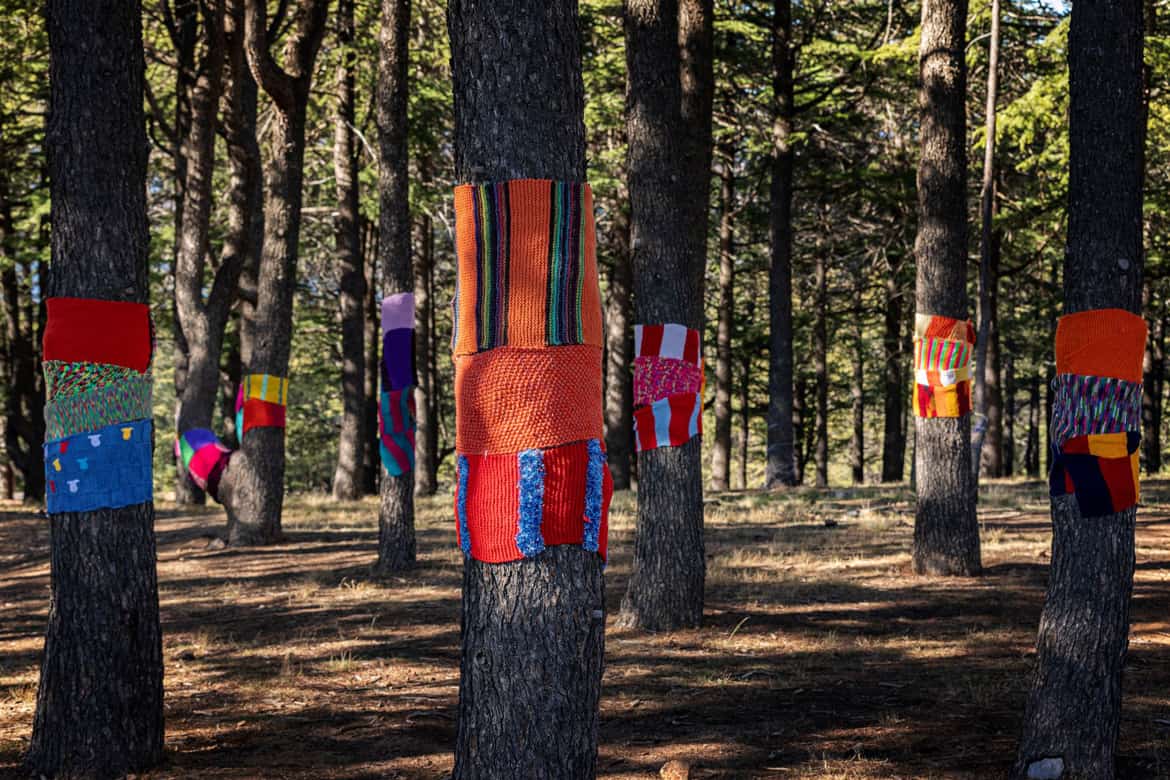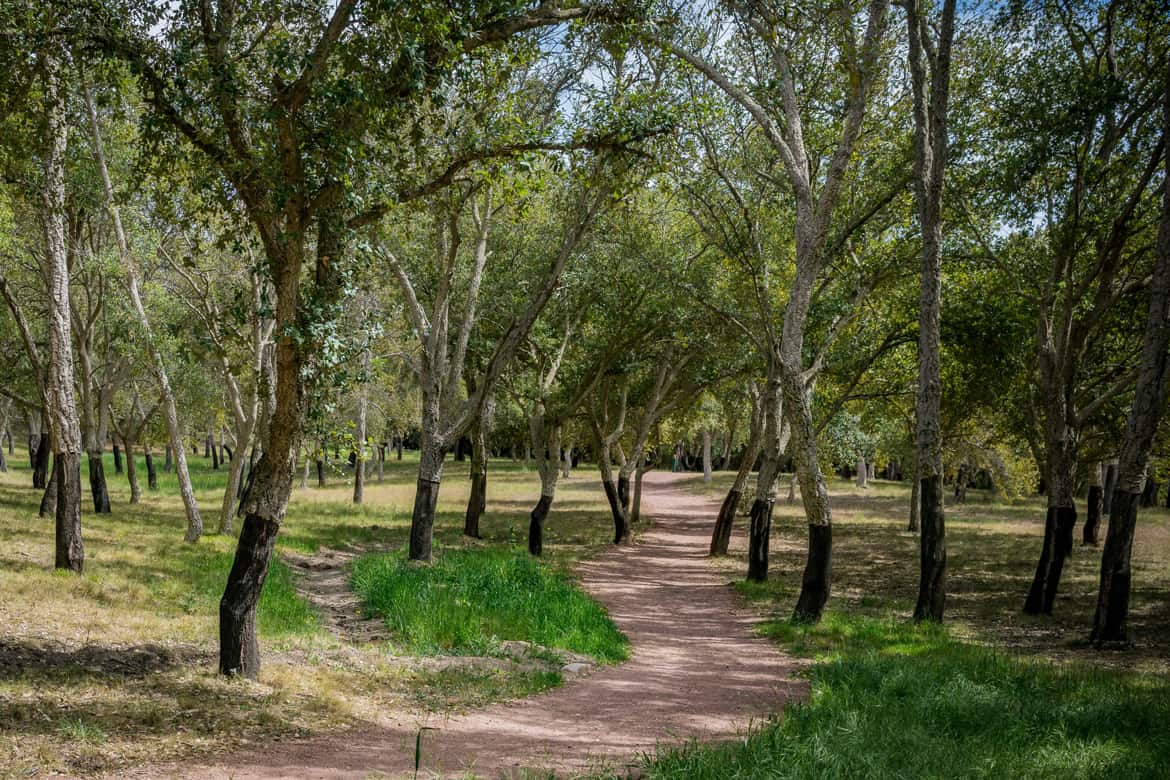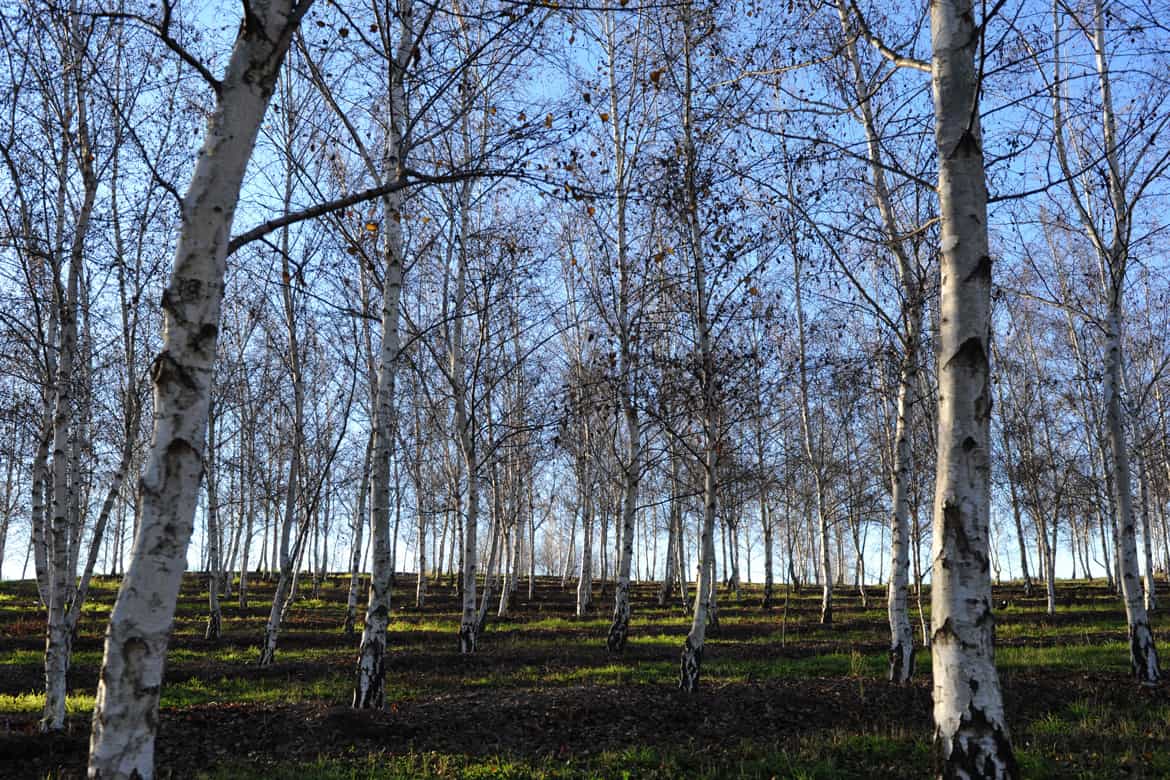After the devastating bushfires that ripped through the Australian capital in 2003, it would have been hard to believe that from the ashes of scorched pine forests would rise a world-class arboretum less than two decades later.
Near the sweeping entrance of the National Arboretum Canberra, dramatically positioned on a hill, is a massive steel sculpture of the words wide brown land which celebrates Dorothea Mackellar’s popular Australian poem My Country, written in 1908. The sculptural forms that make up the work, created by Marcus Tatton and Chris Viney, are inspired by the cursive style of Mackellar’s own handwriting.
With its breathtaking views of the city and surrounding mountains, the arboretum certainly has wide vistas, but brown is in short supply as this is a “botanical garden devoted to trees”. That’s the definition of an arboretum, and the National Arboretum Canberra, which opened in Australia’s national capital in its centenary year 2013, is a tree hugger’s heaven.
Although most of the plantings are recent, it had a head start by having two forests established over 100 years ago as part of Canberra designer Walter Burley Griffin’s vision for the garden city. One is of cork oaks and the other is Himalayan cedars, which stopped visitors in their tracks decked out in brightly coloured knitted scarves during July’s sub-zero temperatures as part of the Warm Trees project.
He’s the branch manager, really!
Scott Saddler AM, Executive Branch Manager National Arboretum Canberra, and Stromlo Forest Park, says he loves all the trees but, when pressed, confesses his favourite is the Wollemi pine forest, which is the largest outside of the secret canyon in the Blue Mountains where they were “discovered” in 1994. They are the world’s oldest and rarest plants, dating back to the time of the dinosaurs.
“There are 88 Wollemis currently here in a stand at the National Arboretum producing thousands and thousands of seeds that we deliver to the Royal Botanic Garden Sydney and then they distribute the seeds all over the world,” Mr Saddler says.
“They were planted in 2014 and some have got to over five metres which is quite extraordinary. They struggled for some time here at the National Arboretum, but our amazing arboriculturist suggested we mulch them with a sandstone mulch because they were found in a sandstone gully in Katoomba. So, we did, and they grew exponentially. With the introduction of the sandstone into the root system the trees just shot up, which was amazing to see.”
From ashes came forests
The 103-year-old Cork Oak forest is one of the oldest plantings in the arboretum. Manuel Silva and Manuel Graca, two cousins from Ponte De Sor in Portugal’s cork-growing region, were brought to Canberra in 2001 by the Portuguese cork company, Amorin. They demonstrated cork stripping at the plantation, which received much media attention. In November 2005, three Portuguese/Australian men were commissioned by ACT Forests to strip cork over a two-week period and the harvest was sold to plant nurseries for growing orchids.
“This is probably the only arboretum in the world which is based on monoculture,” Mr Saddler says. “This means one tree, one species, one forest. In 2003 when the fires came through Canberra it burned out all the pine forest that was here but the two forests that were planted by Walter Burley Griffin, the Cork Oak forest and the Himalayan Cedar forest, were spared.
“The original Walter Burley Griffin plan for Canberra had six continents of forests supposed to be planted down the western end of the lake but only two were planted – the Cork Oak forest and the Himalayan Cedars. When the EOI [expression of interest] went out worldwide in 2005 for what the arboretum should look like, the winning company decided to continue the monoculture. So, the National Arboretum is based on 100 forests and 100 gardens of rare, endangered, and symbolic species from Australia and all over the world,” Mr Saddler says.
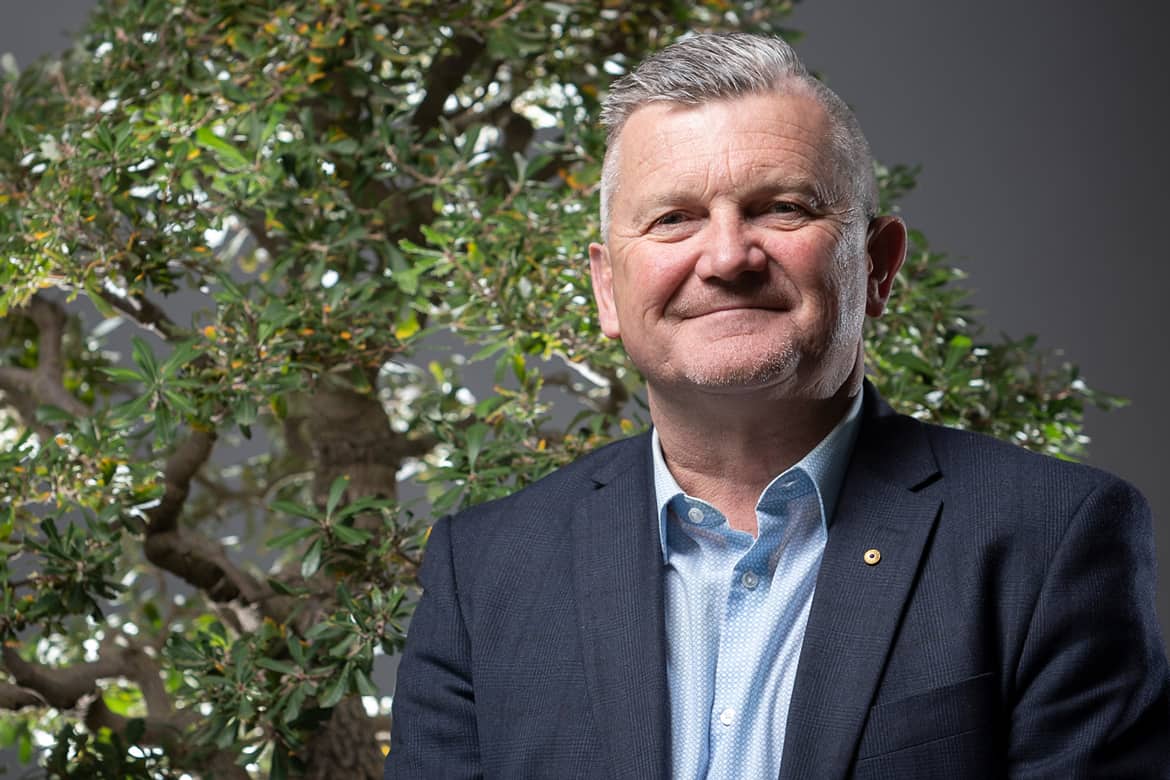
Scott Saddler pinches himself each day as he arrives at work at the National Arboretum Canberra. Photo: Richard Poulton
Listen to the trees
Having started as a young greenkeeper, Mr Saddler progressed into horticulture and acquired qualifications in arboriculture, irrigation design and installation, plus management.
“So, when this job came up at the National Arboretum it was made for me. I pinch myself every day I drive through the gates.”
In his bestselling book The Hidden Life of Trees, forester and author Peter Wohlleben examines how trees communicate through scent. One can only wonder what messages the 44,000 specimens in the 94 forests in the Arboretum will be sharing with each other in the decades to come as they mature and flourish, becoming an integral part of the city’s landscape. TTW
Featured photo: The National Arboretum has the second largest stand of prehistoric Wollemi pines. Richard Poulton.

